# Customised Reports
The Customised Reports page allows you to create, manage, and customize reports tailored to your needs. For instance, if you want a report on all orders and payments for the events you are managing this month, you can generate a report focused solely on your events, filtering out events managed by other managers. This feature ensures you have access to only the data relevant to your work, giving you greater control over the information you need to review and analyze effectively.
# Breadcrumbs
The Customised Reports feature includes seven stages: Saved Reports, Primary Table, Parent Tables, Fields, Sequence, Filter Search, and Results. Breadcrumbs at the top of the screen, displaying screen names, show your current location within these stages and provide links to navigate back to previous screens. This allows you to easily return to earlier stages while retaining your previous selections.
# Saved Reports
The Saved Reports screen lists all the reports you have created and provides an option to start a new one.
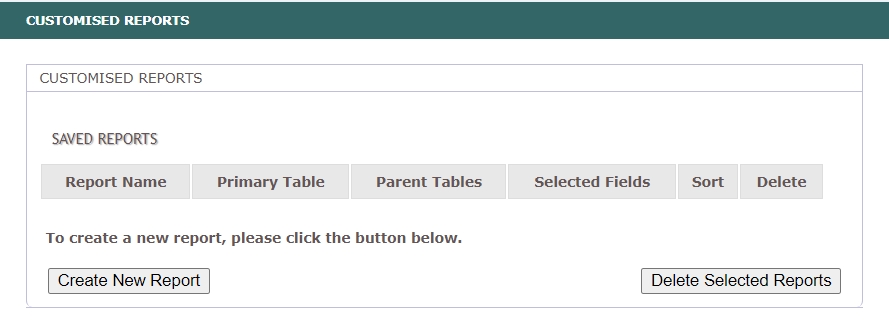
Each saved report is displayed with the following attributes:
- Report Name - a unique name assigned to the report for easy identification, consisting of the date, time, and your credentials.
- Primary Table - the main table around which the report data is centered.
- Parent Tables - any related tables linked to the primary table, including their fields.
- Selected Fields - specific fields from the tables that are included in the report.
- Sort - the sorting criteria applied to a selected field.
- Delete - an option to remove the selected report from the saved list.
To create a new report, click the Create New Report button.
# Primary Table
To start creating a report, select the primary table from the available options. The primary table serves as the main source of data for the report.
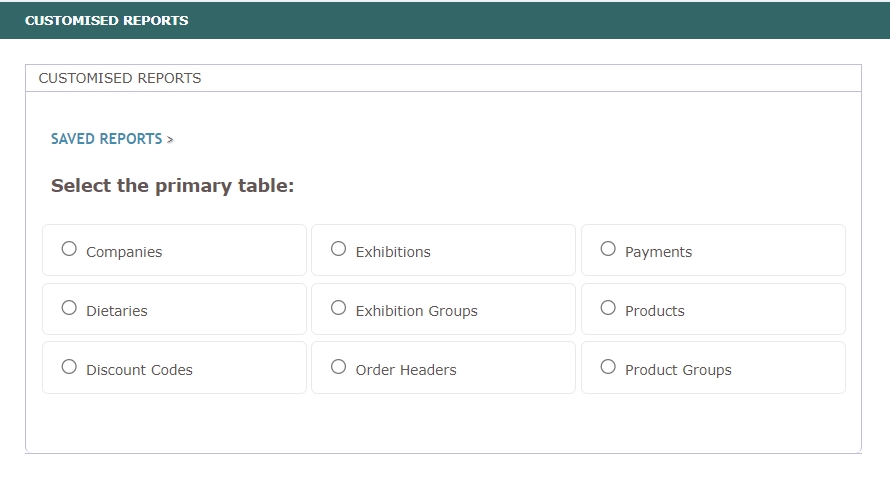
The available tables include:
CompaniesDietariesDiscount CodesExhibitionsExhibition GroupsOrder HeadersPaymentsProductsProduct GroupsTariffs
# Parent Tables
After selecting the primary table, choose any related parent tables that are directly linked to the primary table. These parent tables provide additional context and data for your report; for example, you can add order details to a payment report.
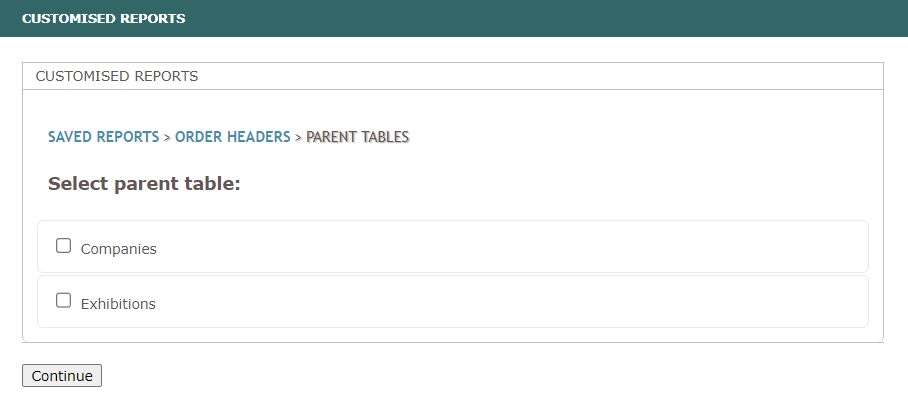
If the selected table has no directly related parent tables, a message will display: No parent tables found for the selected primary table.
# Field Selection
Select the specific fields that you want to include in your report. These fields are associated with the selected primary and parent tables. Only the fields you select will be included in the final report.
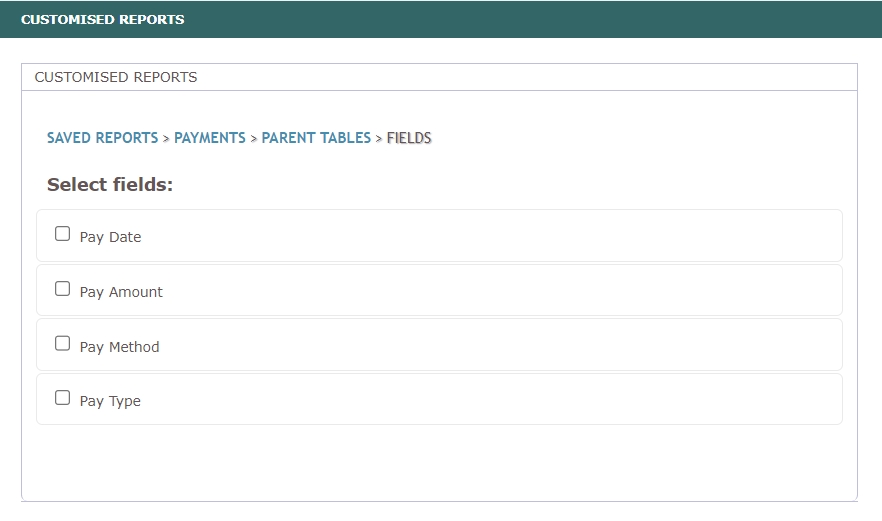
# Field Sequence
After selecting the fields for your report, you can arrange them in your preferred order or apply filters to refine the data, such as specifying a date range. To organize the fields, assign sequence numbers and click the 'Resort' button to apply the changes. When you are satisfied with the sequence, clicking 'Continue' will take you directly to the Results screen with the selected order.
If you want to apply specific filters to the selected fields, check the desired fields in the Filter column and then click 'Continue' to proceed to the Filter Search screen for further customization.
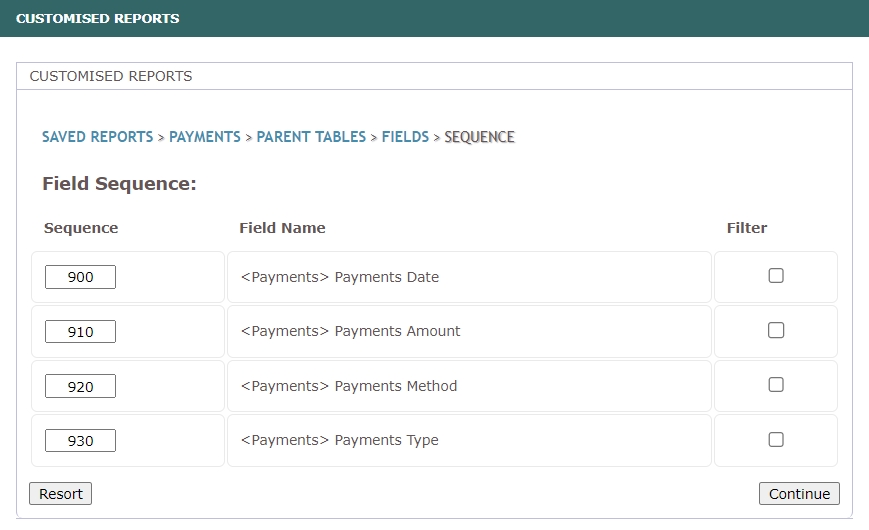
# Filter Search
In the Filter Search screen, you can apply specific search parameters to filter data by date ranges, numerical ranges, or text. This feature helps you narrow down the information to only what is most relevant.
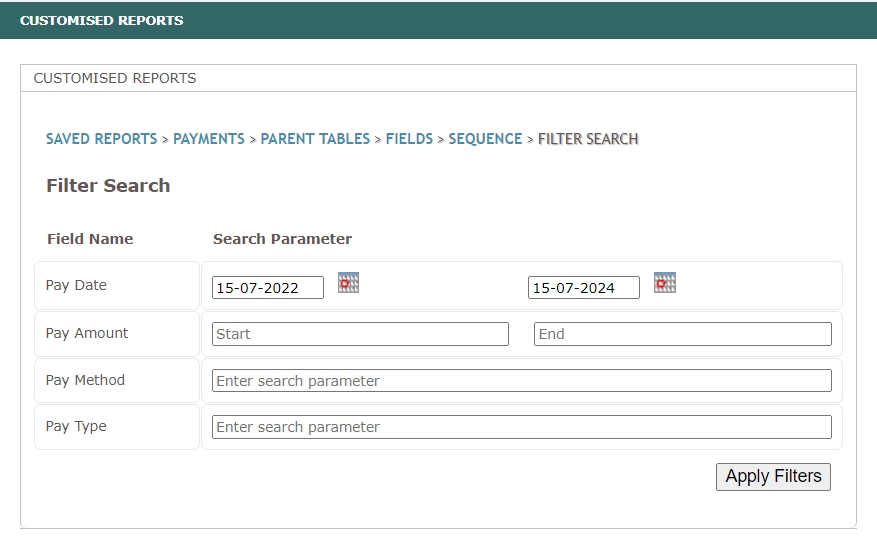
Once you have refined your filter settings, click 'Apply Filters' to view the results.
# Results
The results of your customized report will be displayed on the final Results screen. For your convenience, you can save the report for later use or download it as a CSV file.
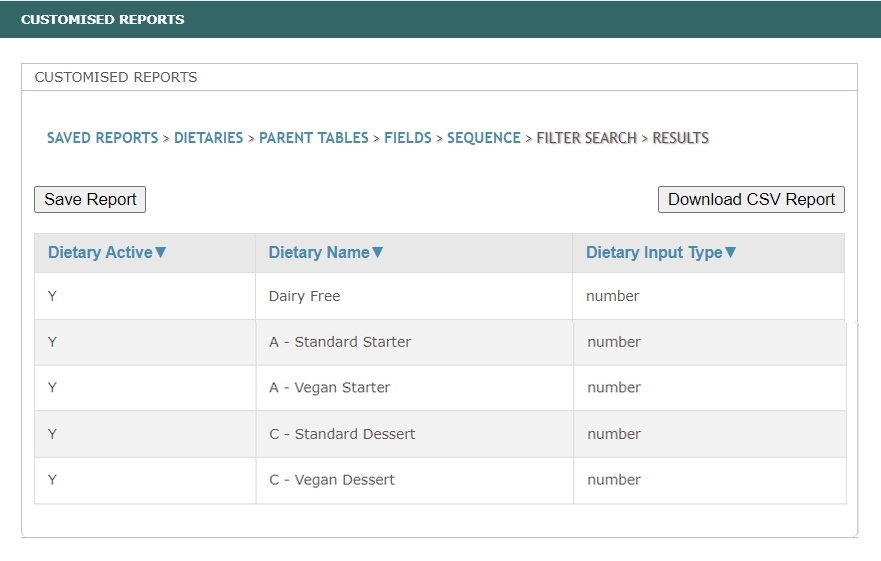
If you need to adjust the report, use the breadcrumbs to navigate back to previous selections. Additionally, you can change the sort order by clicking on the column headings in the results table.
TIP
Loading a large amount of data, such as all orders for your venue, may result in slower performance. In such cases, applying additional filters is recommended to improve page loading speed.